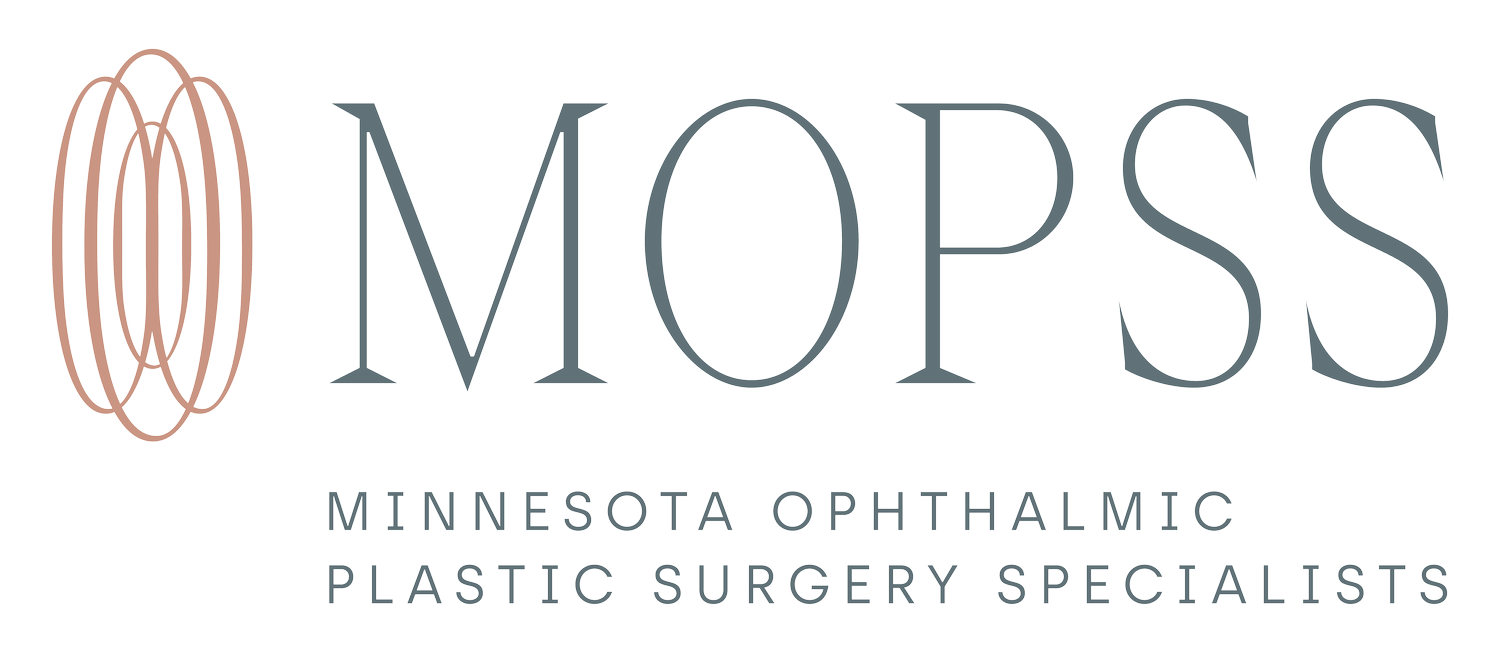Eyelid Surgery
It is often said that the eyes are the windows to the soul; a person’s mood or expression is often reflected by the appearance of his or her eyes. If the upper eyelids appear heavy or drooping, or the lower eyelids are puffy, it can give the false impression that one is tired, stressed, sad, or even older than one’s age. This is why the blepharoplasty (eyelid lift) and ptosis repair (eyelid muscle tightening) are two of the most common cosmetic procedures performed today.
If you are considering undergoing a blepharoplasty and/or ptosis repair of the upper eyelids and/or a blepharoplasty of the lower eyelids, please remember that although this is a rejuvenating surgical procedure, it is still an operation. At Minnesota Ophthalmic Plastic Surgery Specialists (MOPSS), we want to see you get the most out of your surgery, including having the longest lasting effects and the shortest possible recovery time. We hope the information below provides helpful information for you to make the best decision for you as an individual as you embark on your journey to look more how you feel. The eyelids are often times the first area to show early signs of aging. This is because the skin is the thinnest around the eyes, which makes it the most vulnerable to environmental damage, sun exposure, stress, and even other medical conditions.
A main cause of aging or heavy upper eyelids is excessive skin (dermatochalasis) that “weighs down” the eyelid causing the eyelids to feel or to look heavy or tired. The procedure for addressing this “extra” skin is an upper eyelid blepharoplasty. The incision for an upper eyelid blepharoplasty is made along the natural crease of the eyelid. The excess skin, muscle (and at times, fat) are removed, and the incision is closed using a suture.
Drooping of the upper eyelids (ptosis) is also quite common. Although it can be present in children, it is most common in adults. As one ages, the tendon that attaches to the levator muscle (the main muscle that opens the eyelid) stretches. This causes the eyelid to droop. This procedure is called a ptosis repair and can be performed through a lid crease incision or through an internal eyelid incision.
Many times, a blepharoplasty and ptosis repair are performed simultaneously. Your surgeon will discuss the best surgical procedure(s) for your particular facial anatomy and concerns.
“Bags” or puffiness often appears on the lower eyelids over time. The orbital septum that holds the orbital fat in place stretches, and the facial anatomy and skin change making these fat pads more visible. The lower eyelid “bags” or puffiness can usually be removed by making an incision inside of the lower eyelid and removing, repositioning, or even sculpting these fat pads. If there is additional hanging or sagging skin that remains, this can be removed and tightened through an incision underneath the lower eyelid lash line.
Upper and lower eyelid blepharoplasties and ptosis repair surgeries are performed as outpatient procedures in a surgery center or hospital with an anesthesia team who administers relaxing medications through an IV. The surgery typically takes 45 – 90 minutes depending on what specific surgical procedure your surgeon recommends. You will usually be given an antibiotic ointment to apply over the incision lines 3 times per day until your follow-up appointment as well as an oral pain medication to take as needed for your comfort. Your surgeon and the nurses will discuss the specific instructions with you and your family at the time you are discharged from your procedure.
